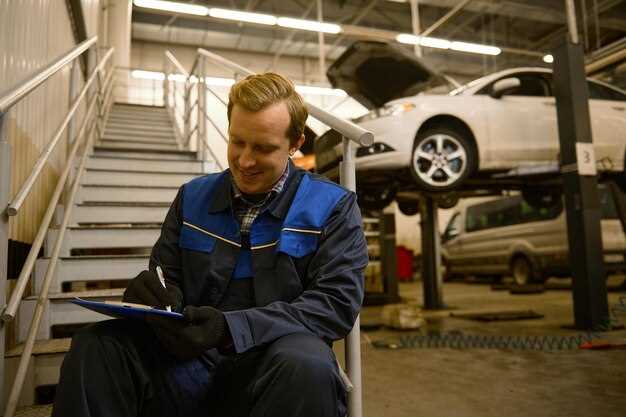
How long should a car repair take?

When it comes to car repair services, understanding the typical timeframes involved is essential for both vehicle owners and professionals in the industry. Different types of repairs can require varying amounts of time, depending on the complexity of the issue and the resources available at the repair shop. Setting realistic expectations for completion times can help mitigate frustration and ensure a smoother experience for all parties involved.
In general, minor repairs such as oil changes, tire rotations, and brake pad replacements can often be completed within a few hours. On the other hand, more complex issues like transmission repairs or engine overhauls may take several days or even weeks to fully address. It’s vital for car owners to communicate with their repair shop to get an accurate estimate of how much time they should expect each service to take, while also considering any unforeseen complications that may arise during the repair process.
Moreover, the relationship between a car owner and the repair shop can significantly influence the overall experience. A trustworthy shop will not only provide estimates that reflect the reality of repair durations but will also keep customers informed throughout the process. By aligning expectations with the actual time needed for repairs, both the car owners and the mechanics can foster a more productive and positive working relationship.
Understanding Average Repair Times for Common Issues

When it comes to car repair, knowing the typical times required for various issues can help you manage your expectations and plan accordingly. Different repairs require different levels of expertise, parts procurement, and labor. Here’s a summary of average repair times for some of the most common car issues.
Brake Replacement: This is one of the most frequent repairs. Depending on the vehicle and the complexity of the brake system, brake pad replacement can take about 1 to 2 hours. If the rotors are also being replaced, expect the time to extend to 2 to 3 hours.
Oil Change: An oil change is a relatively quick service. Typically, it takes around 30 minutes to 1 hour at a repair shop. This includes draining the old oil, replacing the oil filter, and adding new oil.
Tire Rotation: Rotating your tires is essential for even wear and longevity. Most shops can perform this service in 30 to 45 minutes.
Transmission Repair: More complex issues, such as transmission problems, can take significantly longer. A full transmission repair can take anywhere from 4 to 8 hours, while a simple fluid change may only require 1 to 2 hours.
Engine Diagnostic: Diagnosing engine issues can vary widely in time, often taking between 1 to 2 hours. However, if the problem is more complicated, additional time may be needed to pinpoint the exact issue.
Battery Replacement: Replacing a car battery is generally straightforward and can be completed in 30 minutes to 1 hour, depending on location and accessibility within the vehicle.
Understanding these average repair times can help you make more informed decisions when visiting a repair shop. Always communicate with your mechanic for the most accurate timeline based on your specific vehicle and the nature of the repair needed.
Factors Influencing Repair Duration at Auto Shops
Several factors can significantly influence the duration of car repairs at auto shops. Understanding these elements can help customers set realistic expectations regarding the time their vehicle will be in the shop.
One major factor is the complexity of the repair itself. Basic repairs, such as oil changes or tire rotations, generally take less time compared to more intricate issues like engine overhauls or transmission replacements. The more complicated the problem, the longer the repair will likely take, affecting overall timelines.
Another important consideration is the availability of parts. If a car requires specific components that must be ordered from a supplier, this can lead to delays. Customers should expect that certain makes and models might have longer wait times due to limited availability of parts, especially for foreign vehicles or discontinued models.
The workload of the auto shop also plays a crucial role. Busy shops may have a backlog of vehicles waiting for repairs, which can extend the time a car spends in the shop. On the other hand, shops with fewer cars may be able to complete repairs more quickly. Customers should inquire about the shop’s current workload to gauge how it might affect their vehicle’s repair duration.
Mechanic experience and expertise can also impact repair time. Skilled technicians may execute repairs more efficiently than those with less experience. A well-trained team can diagnose problems more quickly and implement solutions effectively, ultimately reducing the time the car is in the shop.
Lastly, unexpected complications can arise during the repair process. Initially unseen issues may be discovered once the vehicle is disassembled, adding additional time to the estimated repair duration. Customers should be prepared for the possibility of increased timeframes should unforeseen problems arise.
In summary, a variety of factors including the complexity of repairs, parts availability, shop workload, mechanic expertise, and unexpected complications all influence the duration of car repairs at auto shops. Being aware of these elements can help set realistic expectations regarding repair time.
Setting Realistic Expectations for Vehicle Downtime

When taking your vehicle to the repair shop, understanding the timeframe for repairs is crucial. Establishing realistic expectations for vehicle downtime not only helps in planning your daily activities but also reduces frustration during the repair process.
Typically, repair time can vary significantly based on the type of issue at hand. Minor repairs, such as oil changes or brake pad replacements, might only require a few hours in the shop. However, more complex problems, such as engine repairs or transmission work, can lead to extended downtime–potentially days or even weeks.
Communication with the repair shop is essential. Before leaving your vehicle, inquire about the estimated repair time. Factors such as parts availability, the shop’s workload, and technician expertise can all influence the amount of time a vehicle remains in the shop. It’s beneficial to ask for a detailed estimate, as this can provide a clearer picture regarding how long you might be without your car.
While companies strive to complete repairs promptly, unforeseen circumstances can arise, leading to potential delays. Recognizing that these situations can happen prepares you for any adjustments to the expected timeline.
In conclusion, setting realistic expectations regarding vehicle downtime is key to a smoother repair experience. By actively engaging with the shop and understanding the factors at play, you can better manage your time and minimize inconvenience.